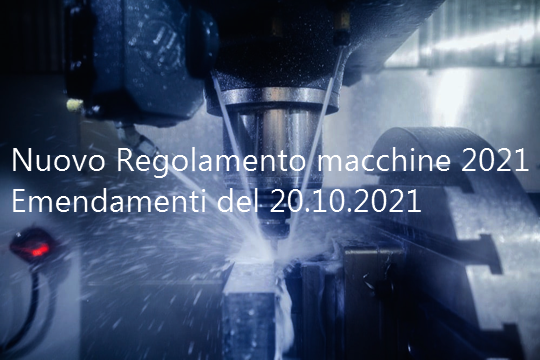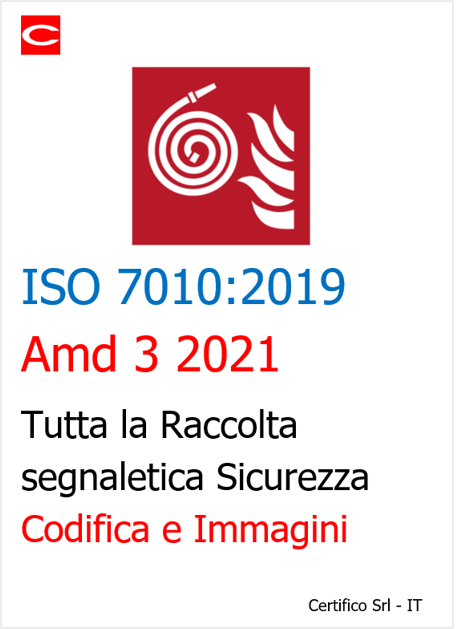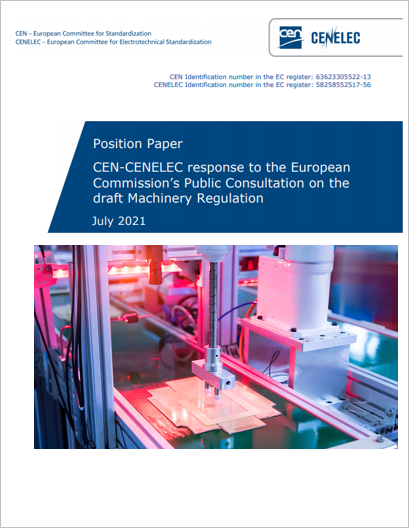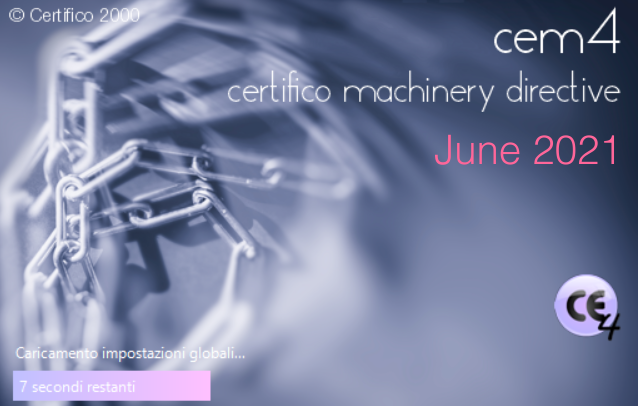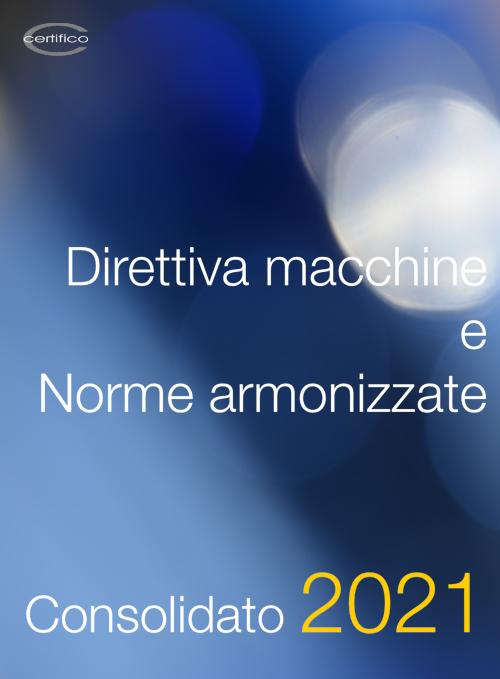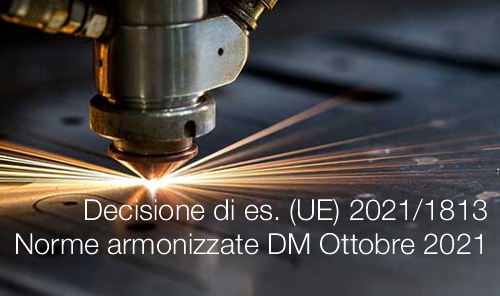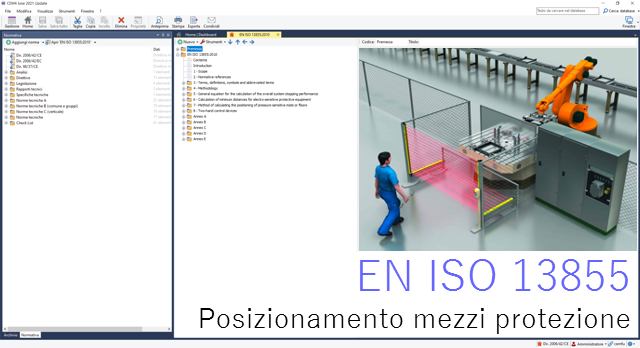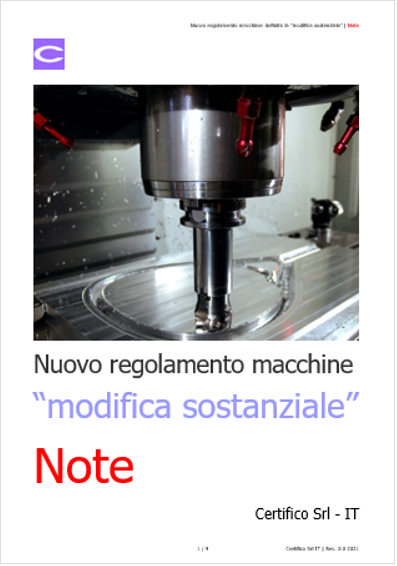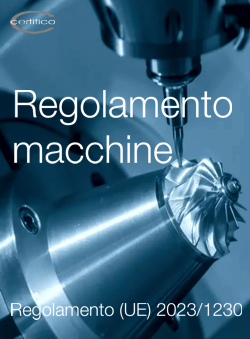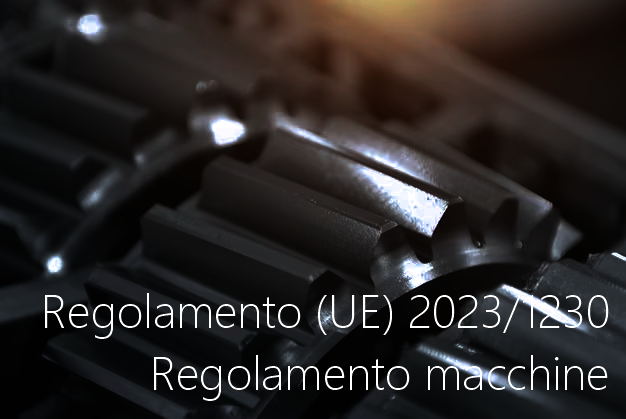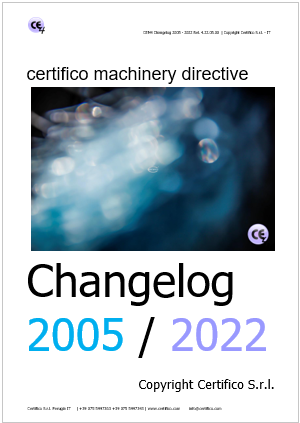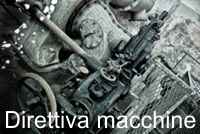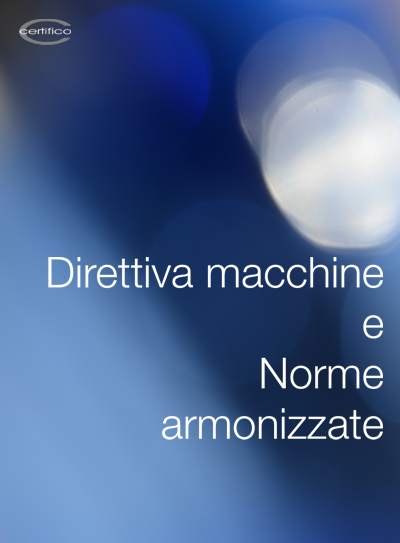Nuovo Regolamento macchine 2021: emendamenti del 20 Ottobre 2021
Nuovo Regolamento macchine 2021 / Pubblicati in data 20 Ottobre 2021 emendamenti al Draft di Aprile 2021
ID 14845 | 29.10.2021 / Report emendamenti allegato
Gli emendamenti, prevedono modifiche alla Proposta di nuovo regolamento macchine di Aprile 2021 (2021/0105(COD), in particolare inerenti:
- definizione più chiara delle quasi-macchine;
- precisazioni sul ruolo del rappresentante autorizzato (già ‘mandatario’ nella direttiva 2006/42/CE);
- modifica di " macchine ad alto rischio" in " macchine potenzialmente ad alto rischio"
- indicazioni sugli obblighi per la messa in servizio delle macchine;
- mantenere la possibilità per i fabbricanti di utilizzare anche la procedura di controllo interno della produzione (modulo A) di cui all'allegato VI per i macchinari potenzialmente ad alto rischio,
- precisazioni sulla documentazione in formato digitale;
- data entrata in vigore spostata da 30 a 48 mesi dalla pubblicazione
________
2021/0105(COD) 20.10.2021
Draft Report on the proposal for a regulation of the European Parliament and of the Council on Machinery products (COM(2021)0202 – C9-0145/2021 – 2021/0105(COD))
Committee on the Internal Market and Consumer Protection
EXPLANATORY STATEMENT
The Machinery Directive 2006/42/EC establishes a regulatory framework for placing machinery on the Single Market, ensuring its free movement and a high level of protection for users and other persons exposed to machinery products.
On 21 April 2021, the Commission put forward a proposal to revise the Machinery Directive.
The proposed revision came 15 years after the adoption of the Machinery Directive, currently in force, reflecting the Commission Work Programme 2020 under the priority ‘A Europe fit for the Digital Age’. In parallel, the Commission proposed a new Artificial Intelligence Act, with the main goal to reflect the change of the digital transition and the impact of new technologies on the Union product safety legislation.
As the machinery sector is an essential part of the engineering industry and one of the industrial pillars of the EU economy, the Rapporteur finds it very important to consider changes to its legislative framework with due care in order to secure sustainable recovery from the COVID-19 crisis while enabling innovation and new design development, and to keep European producers and designers competitive at the global level playing field.
The Rapporteur welcomes the Commission proposal for a Regulation on machinery products and fully supports its alignment with the New Legislative Framework (NLF) as it brings coherence with the other legislative acts on products safety and horizontal transparency. The Rapporteur also supports the conversion of the Directive into a Regulation as it facilitates uniform application across all EU Member States and therefore the free movement of goods.
While preparing the draft report, the Rapporteur carried out a broad consultation with stakeholders, listening to views and needs of the manufacturers, notified bodies and consumers, and, in addition discussing the proposal with the Commission. On that basis, the Rapporteur proposes the following main changes to the Commission proposal.
1. Scope and definitions
The Rapporteur proposes clarifying the scope, in particular with regard to the exclusion of motor vehicles from the Regulation. In addition, the Rapporteur proposes clarifications of several definitions, such as ‘safety component’ ‘substantial modification’ and ‘manufacturer’, and suggests new definitions on ‘machinery product’, ‘safety function’, ‘technical documentation’ and ‘lifecycle’ in order to contribute to the clearer understanding of the
enacting provisions.
Since the Regulation applies to ‘machinery products’ which, according to the Commission proposal, cover also ‘partly completed machinery’, the Rapporteur considers it important to make a clearer distinction between the definitions applying to ‘partly completed machinery’ and those applying to other categories of machinery products.
This distinction should also be made in respect of the requirements for machinery products in general and those for ‘partly completed machinery’, and in respect of the obligations, including (conformity) assessment procedures, of economic operators.
2. High-risk machinery products
The Rapporteur proposes that the term ‘high-risk machinery products’ be replaced by ‘potentially high-risk machinery products’ throughout the text as he considers that machinery products placed nowadays on the market do not present a high risk by default but only in certain situations.
In addition, in respect of the Commission empowerment to adopt delegated acts to amend Annex I listing potentially high-risk machinery products, the Rapporteur proposes that such delegated acts should not apply earlier than 36 months after their entry into force, so that manufacturers have enough time to adapt their design and production.
The Rapporteur emphasised in the report that machinery products should comply with the essential health and safety requirements when placed on the market or put into service.
Finally, in Annex III the rapporteur specified that the remote control for supervisory control function for autonomous operations should be implemented only as an option, ensuring that the remote actions do not increase the level of risk.
3. Conformity assessment of potentially high-risk machinery products
The Rapporteur proposes to keep the possibility for the manufacturers to use also the internal production control procedure (module A) set out in Annex VI for potentially high-risk machinery products, as he is not convinced that there are enough arguments for removing this option, while keeping in mind both the safety of machinery products and the machinery sector competitiveness and flexibility for innovation. In addition, keeping the possibility of using the internal production control procedure is of particular importance for SMEs.
Moreover, the Rapporteur believes that manufacturer’s authorised representative should not have a mandate for ensuring conformity assessment for machinery products or to be responsible for preparing technical documentation. The manufacturer should be the only responsible for these tasks, in line with the provisions of NLF.
4. Commission empowerment to adopt technical specifications
In respect of the Commission proposal to be able to exceptionally adopt implementing acts establishing technical specifications for the essential health and safety requirements in case of absence of harmonised standards, the Rapporteur proposes that such technical specifications do not apply should harmonised standards be developed in the future. Also, the Rapporteur believes that technical specifications could be drafted by the Commission only if European standardisations organisations have not delivered harmonised standards 3 years after the standardisation request.
5. Documentation
All relevant technical documentation, assembly instructions and declarations should be provided in digital or paper form and, if provided digitally, should be accessible during the whole lifecycle of the machinery product.
6. Market surveillance
The Rapporteur clarifies the rights of Member states’ market surveillance authorities and duties of economic operators in case where a machinery product does not comply with the requirements in this Regulation or poses a risk. While doing that, he strives to align the provisions on market surveillance with the Market Surveillance Regulation (EU) 2019/1020.
7. Deadlines and transitional provisions
The Rapporteur proposes extending the deadline for the repeal of Directive 2006/42/EC from 30 to 48 months after the date of entry into force of the new Regulation. In line with that, the transitional period has been extended from 42 to 60 month, as well, and the deadline for the Commission to present its first report on the evaluation of the Regulation from 54 to 72 months.
Finally, the date of application of the Regulation was postponed from 30 to 48 months after its entry into force.
- Pubblicato: 29 Ottobre 2021
- Visite: 23546





